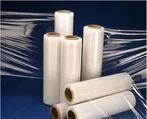Precautions for agricultural mulch
Mulch can play a very good role in warming, moisture preservation, weeding and so on. With the increase in the amount of agricultural plastic film and the number of years of film mulching, the residual amount of waste plastic film in the soil has increased year by year, and the negative effect of residual film pollution has gradually emerged. The municipal agricultural technology extension station reminds the majority of growers: At present, the spring mulching crops such as fresh corn, sweet potatoes and open field vegetables will be sown or planted one after another. The precautions for the scientific use and recycling of agricultural mulching film are as follows.
1. Scientific selection of mulch
There are two types of mulch film: ordinary polyethylene mulch film and fully biodegradable mulch film. In production, suitable mulch film can be selected according to the actual situation.
Ordinary polyethylene (PE) mulch film: It is a non-degradable mulch film with polyethylene as the main raw material and an appropriate amount of additives added. The cost is low, but the cost of recycling and disposal is increased. The use of ordinary polyethylene mulch film must meet the national mandatory standard "Polyethylene Blown Agricultural Ground Covering Film" (GB 13735-2017): the thickness shall not be less than 0.010 mm, and the tensile strength and weather resistance shall meet the requirements. When purchasing mulch, you should check whether the type, thickness, color, size, etc. are consistent with the certification mark. Do not buy polyethylene mulch film with a thickness of less than 0.010 mm. It is recommended to use thickened high-strength mulch film with a thickness of 0.014 mm and above to improve the recycling and disposal rate of residual film. Fully biodegradable mulch: It is a new type of mulch product that can be degraded by microorganisms existing in nature, and finally completely degraded into carbon dioxide or/and methane, water and its mineralized inorganic salts and new biomass. Fully biodegradable plastic film products should comply with the national standard "Fully Biodegradable Agricultural Ground Cover Films" (GB/T 35795-2017), and the biodegradation performance and artificial weathering performance should meet the requirements. When purchasing mulch, you should check whether the type, thickness, color, size, etc. are consistent with the certification mark. Different from ordinary PE mulch, the fully biodegradable mulch itself can be completely degraded, and there is no special requirement for thickness.
2. Efficient laying of mulch
Improve the quality and efficiency of the mulch by means of fine soil preparation, mechanical laying and proper soil compaction.
First of all, it is necessary to prepare the ground carefully before laying the film. Hard objects such as straw, gravel, and twigs remaining in the soil are easy to pierce the mulch and affect its effect. They should be removed in time, the clods should be crushed, and the mulch should be raised mechanically or manually. Secondly, try to mechanically lay the film and reduce the process. When fresh corn, sweet potato and open field vegetables are covered with mulch, it is recommended to use composite agricultural machinery for integrated operations such as mulching and drip irrigation belts to reduce operating procedures and improve work efficiency. Where conditions permit, the method of shallow burial drip irrigation and mulching can be adopted to separate the drip irrigation belt from the plastic film; because the black drip irrigation belt is easy to absorb heat, it is easy to cause the plastic film to rupture along the bottom of the drip irrigation belt, affecting the use effect. If artificial mulching is used in greenhouses and sheds, the mulching film should be close to the ground, and the mulching film should not be pulled too much to prevent mechanical damage and affect later recycling. In addition, properly press the soil anti-tipping film. The edge of the membrane should be 7-10 cm and the soil should be properly pressed every 2-3 meters on the furrow in the windy area, and the part of the membrane on both sides to be pressed into the soil should be increased. When cultivating on high borders, the film should be pressed into the bottom of the furrow to prevent the film from being exposed by strong winds caused by covering the waist of the furrow. Check it again 3 to 4 days after the film is covered. If the film is not tightly sealed or the film runs off, press it at any time, and be careful not to hurt the seedlings.
3. Recycling and disposing of residual film
Different recycling and disposal methods are adopted for the two product types of ordinary polyethylene mulch film and fully biodegradable mulch film.
Ordinary polyethylene mulch film: The film should be removed in time according to the use time requirements of different crops for the mulch film. On the premise of not affecting the growth and development of crops, the mulching time can be shortened, the toughness of the mulch film can be maintained, the damage of the mulch film can be reduced, the recovery rate of the mulch film can be improved, and the surface impurities can be removed during the film collection process. , the impurities can also be shaken off by the vibration of the film collection machine. The recycled plastic film can be handed over to the recycling site, and the recycling site will uniformly transfer it to a qualified enterprise for recycling and reuse.
Fully biodegradable mulch: In the open field cultivation mode, the fully biodegradable mulch can not be recycled, reducing the recycling operation process and saving the labor cost of recycling the mulch; after the growing season, the mulch can be disposed of by soil degradation through plowing and land preparation; in the facility cultivation mode , After the crop stubble ends, the degradable mulch film will not degrade immediately, and the degradable mulch film can be removed outside the facility following the shed cleaning operation, and disposed of by composting and degradation together with crop straws.





